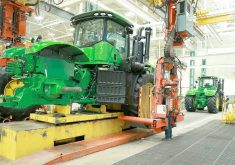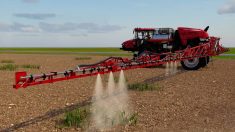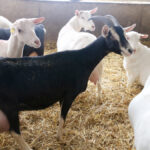Time and again, when I talk with both farmers and consumers about local food and supporting farmers, I am asked why we have such a poor labelling system for food grown and produced in Canada.
As citizens, we have the right to know where our food comes from. We also have the right to know that the food we eat is grown and processed to the standards we have here in Canada. By choosing food grown and processed in Canada, we not only support Canadian farmers but we help create a more diversified local food system, we keep processing jobs in Canada and we reduce food miles. However, a visit to a supermarket quickly reveals how confusing our labelling system is.
Read Also

Guarding against misinformation: Do you believe in house hippos?
Misinformation and disinformation run rampant in today’s digital age. Farmers must be wary of the digital dangers and know how to keep themselves safe.
So why is it so difficult for our politicians to put in place a Product of Canada labelling system that makes it easy for us to choose Canadian food?
Could it be that the large retailers, processors and distributors do not want us to know where the food we buy was grown or processed? They know Canadians want to buy Canadian food – that is why they put the small quantities of local food they carry at the front of the store and why they develop their own brands with names like “Farmers Market.”
However, while they spend some marketing dollars to make it appear they are supporting local farmers, at the same time these corporations are busy looking for the cheapest food to stock their shelves. Cheap food for supermarket shelves usually means importing food from countries where standards are lower, labour is cheaper because workers live in poverty or the environment is being destroyed to grow cheap exports.
The National Farmers Union has asked that Product of Canada labelling be made mandatory for fruits and vegetables which are 100 per cent grown and processed in Canada.
In addition, food products processed in Canada with imported ingredients should specify the origin and the percentage of the imported ingredients.
To avoid consumer confusion, we recommend that the country of origin be clearly and prominently displayed on food products which have grades like “Canada Fancy” and “Canada Choice.”
The NFU also supports the use of Product of Canada and country-of-origin labelling on meat as a way to relocalize the Canadian food system and reduce our export dependence.
If you want to know where your food comes from, and if you want to support Canadian farmers when you buy food, make sure you ask the political candidates in your riding how they would support Canadian family farms through labelling. Then once the election is over, be ready to remind the winning candidate about the need for a meaningful Product of Canada labelling system.
AnnSlaterisanNFURegion3(Ontario)nationalboardmemberwhofarmsnearSt.Marys,Ontario.
———
Sowhyisitsodifficultfor ourpoliticianstoputin placeaProductofCanada labellingsystemthat makesiteasyforusto chooseCanadianfood?














